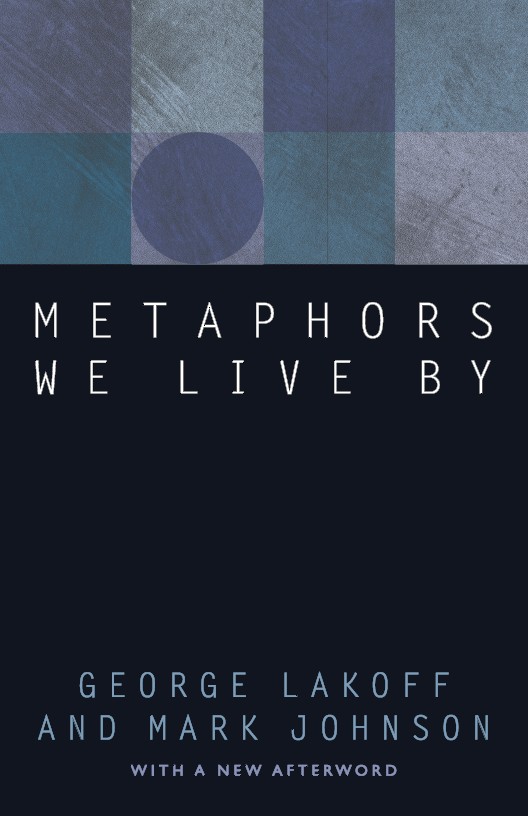Cloth: 978-0-226-46800-6 | Paper: 978-0-226-46801-3 | Electronic: 978-0-226-47099-3
DOI: 10.7208/chicago/9780226470993.001.0001
AVAILABLE FROM
University of Chicago Press (paper, ebook)Amazon Kindle
Amazon Kindle (PDF)
Barnes & Noble Nook
Copia Interactive
Google Play
Kno
Kobo
ABOUT THIS BOOK
In this updated edition of Lakoff and Johnson's influential book, the authors supply an afterword surveying how their theory of metaphor has developed within the cognitive sciences to become central to the contemporary understanding of how we think and how we express our thoughts in language.
AUTHOR BIOGRAPHY
REVIEWS
TABLE OF CONTENTS
Preface
Acknowledgement
1. Concepts We Live By
2. The Systematicity of Metaphorical Concepts
3. Metaphorical Systematicity: Highlighting and Hiding
4. Orientational Metaphors
5. Metaphor and Cultural Coherence
6. Ontological Metaphors
7. Personification
8. Metonymy
9. Challenges to Metaphorical Coherence
12. How Is Our Conceptual System Grounded?
13. The Grounding of Structural Metaphors
14. Causation: Partly Emergent and Partly Metaphorical
15. The Coherent Structuring of Experience
16. Metaphorical Coherence
17. Complex Coherences across Metaphors
18. Some Consequences for Theories of Conceptual Structure
19. Definition and Understanding
20. How Metaphor Can Give Meaning for Forms
21. New Meaning
22. The Creation of Similarity
23. Metaphor, Truth, and Action
24. Truth
25. The Myth of Objectivism and Subjectivism
26. The Myth of Objectivism in Western Philosophy and Linguistics
27. How Metaphor Reveals the Limitation of The Myth of Objectivism
29. The Experimentalist Alternative: Giving New Meaning of the Old Myths
30. Understanding
Afterword
References
Afterword, 2003
